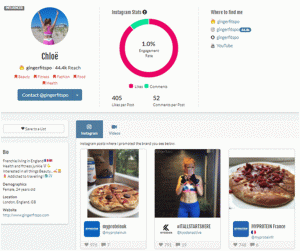— July 3, 2019
When you’re intently focused on improving in-house processes, there’s a fair chance that you could lose sight of what’s happening in the industry at large. It’s certainly not enough to merely refer to a BPM guide once and assume that’s all there is to know about it. There are ongoing technological advancements to keep up with, not to mention continually evolving BPM methodology.
A great way to stay updated is to follow industry trends. These predictions are usually a combination of a keen understanding of what BPM practitioners are lacking, insight into customer expectations, and expected technological developments.
Some BPM trends that are gaining a large following are described below.
Robotic process automation
Robotic process automation (RPA) is the use of technology to automate high-volume, repeatable tasks usually performed by humans. RPA uses machine learning and artificial intelligence to process transactions, manipulate data, trigger responses, and communicate with other systems.
Examples of tasks that can be improved with RPA include processing payments, handling claims, timesheet submissions, and more.
How companies benefit from RPA
- Higher productivity levels of employees
- Effective resource allocation to activities that require human intervention
- Greater cost savings from elimination of redundancies
- Quicker turnaround times due to improved process efficiency
- Compliance with industry-mandated regulations and standards
- Efficient recording and protection of data facilitated by cloud storage
RPA finds effective application in functions across organizations such as customer service, accounting, financial services, healthcare, supply chain management, and human resources.
Adoption of RPA is already underway in many digital native companies across the world and the payoffs are beginning to manifest. In the years to come, more legacy organizations will embrace RPA and the focus will shift to scaling.
Artificial intelligence
Artificial intelligence (AI) is a critical facilitator of BPM goals, from increased efficiency to improved customer experiences. Using technological concepts such as machine learning, natural language processing, visual recognition, big data, and more, AI strives to simulate human intelligence using programmable software.
How AI supports BPM initiatives
- Automation of mundane tasks and removal of bottlenecks
- Predictive analysis powered by powerful reporting capabilities
- Organization of unstructured data
- Enhancement of customer experience by meeting SLAs consistently and providing preemptive service
- Improved decision making with the help of AI-powered decision-theoretic models
Like RPA, organizations have already begun warming up to the idea of AI and use it at basic levels such as chatbots. Going forward, AI will play a much bigger role in enhancing customer experience and helping companies take a proactive approach rather than a reactive one.
No-code platforms
No-code or low-code platforms allow users to develop applications with no knowledge of coding required at all. Using visual development environments such as drag-and-drop, users can create applications to fulfil business process needs without being dependent on the IT team.
No-code BPM software has become the need of the hour in organizations everywhere. Forrester identified the low-code market as a high growth area and predicted that it will grow beyond $ 10 billion in 2019. 29 per cent of companies in a Forrester study stated they were using low-code solutions and 43 per cent were interested in working with low-code solution providers.
Overwhelming IT backlog is no more a cause for departments to endlessly delay their process automation requirements. Any time a department needs to automate their processes, they can do so in a matter of minutes. Training end users is also much simpler since the application is so intuitive.
How no-code platforms power BPM practices
- Greater agility in automating processes when needed
- Ability to customize workflows and interfaces to organizational requirements
- Greater transparency in development so end users get exactly what they need
- Need for external partners is minimized, thereby curtailing costs
No-code platforms will find wide applications in every organization that has business processes. So far, industries such as banking, healthcare and pharmaceuticals, and information technology have improved process management with no-code platforms. Behemoths such as General Electric, Pfizer, and others have enjoyed more streamlined operations and greater efficiency with no-code BPM software.
The road ahead
Going forward, BPM practitioners will need to simplify their operations with respect to the number of applications being used for process management. Clutter and chaos are already significant obstacles to process efficiency. Identifying unified digital workplaces will quickly become the need of the hour.
BPM software will also have to adapt to the changing nature of the workforce. It will have to include simplified collaboration with remote workers, independent contractors, and other forms of employment.
Keeping up with BPM trends is critical to make agile, well-informed decisions. After all, none of us wants to be ostriches with our heads in the sand.
Business & Finance Articles on Business 2 Community
(21)


